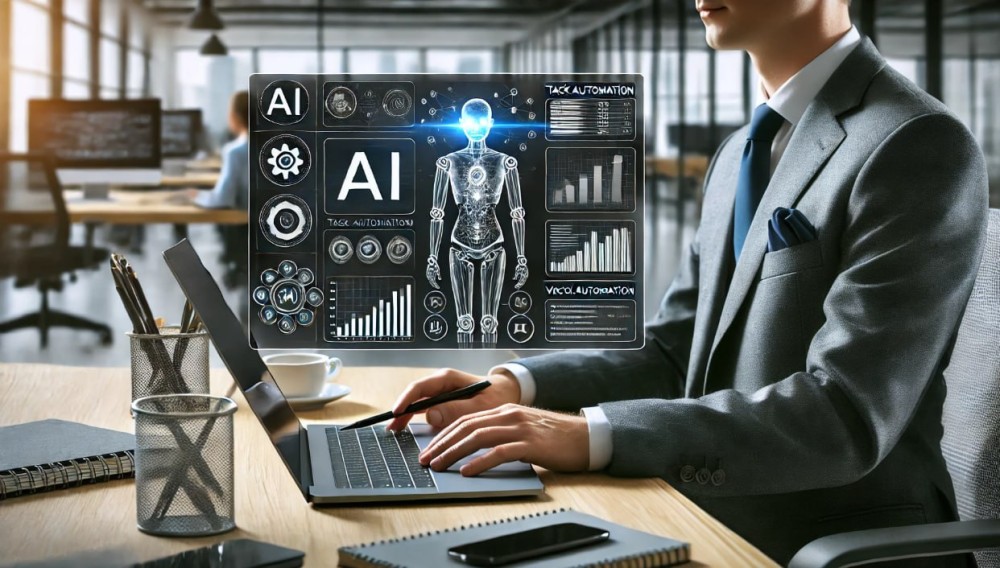In the fast-evolving landscape of the digital economy, companies are leveraging technology in unprecedented ways. One of the most fascinating developments is the rise of virtual employees or digital personas. These AI-powered, data-driven digital entities are reshaping workflows, improving efficiency, and transforming customer experiences across industries. While the concept may sound like something out of science fiction, virtual employees are already becoming a tangible reality in many forward-thinking organizations.
What Are Digital Personas?
Digital personas, often referred to as virtual employees, are artificially intelligent entities designed to mimic human behaviors, capabilities, and decision-making processes. Unlike traditional bots or automated processes that follow a fixed set of rules, these personas are built using sophisticated machine learning algorithms, natural language processing (NLP), and vast amounts of data. They can learn, adapt, and evolve, becoming more attuned to the needs of the organization and its customers.
These virtual employees can handle a wide range of tasks—from customer service interactions to back-office administrative duties. Many companies have started deploying them to take over repetitive, low-skill tasks, allowing human employees to focus on more complex and creative work.
For example, virtual customer service agents can interact with users in real-time, answering questions, solving problems, and even making personalized product recommendations. Meanwhile, back-office virtual employees can process invoices, manage data entry, and ensure compliance with regulatory standards, all without human intervention.
The Drivers of Virtual Employee Integration
Several factors are driving the adoption of digital personas in the workplace:
Labor Market Dynamics

The global labor market is undergoing rapid transformation. Skills shortages in key industries, coupled with increasing wage pressures, are compelling businesses to find alternative solutions. Virtual employees offer a way to augment human teams without the logistical challenges associated with recruiting, training, and retaining staff.
Efficiency and Productivity Gains
For many companies, integrating virtual employees is about optimizing workflows. By automating routine tasks, organizations can significantly increase productivity while reducing errors. Digital personas can work around the clock, process information at speeds no human can match, and never suffer from fatigue or burnout. This leads to more efficient operations and cost savings in the long run.
Improved Customer Experience
With consumer expectations at an all-time high, businesses are under constant pressure to deliver superior customer experiences. Digital personas allow companies to provide instant, personalized service at scale. Whether it's answering a customer's query, processing a refund, or assisting with a complex purchase decision, virtual employees can handle it all with a level of consistency and speed that human teams struggle to achieve.
Data-Driven Decision Making
One of the key advantages of virtual employees is their ability to make data-driven decisions. With access to large datasets, these AI-driven personas can analyze information in real time and offer actionable insights. This helps organizations make better, faster decisions, particularly in industries where responsiveness is crucial, such as finance, retail, and healthcare.
The Technological Backbone: AI and Machine Learning
At the heart of the virtual employee revolution are advancements in artificial intelligence (AI) and machine learning (ML). AI enables digital personas to "think" and "learn" in ways that traditional automation tools cannot. Machine learning algorithms allow these personas to continuously improve their performance by learning from past interactions and outcomes.
For instance, in a customer service setting, a virtual employee can analyze customer feedback to adjust its communication style or improve its ability to resolve issues. Similarly, in finance, a virtual employee could analyze market trends and make real-time trading decisions based on historical data.
Natural language processing (NLP), a subfield of AI, is another key technology enabling digital personas to interact with humans in more sophisticated ways. By understanding and generating human language, virtual employees can engage in conversations, answer questions, and even understand the nuances of context and tone. This makes them valuable assets not only for customer-facing roles but also for internal communications.
Real-World Applications of Digital Personas

Several companies across different industries are already reaping the benefits of virtual employees. Let’s explore some notable examples:
Retail: The Rise of Virtual Sales Assistants
Retailers are using virtual employees to enhance the online shopping experience. Companies like Sephora and H&M have integrated virtual sales assistants into their e-commerce platforms. These digital personas assist customers by offering personalized product recommendations based on their browsing history, preferences, and even previous purchases. This not only improves the customer experience but also drives sales.
Banking: Streamlining Operations
In the banking sector, digital personas are being used to streamline back-office operations. Large financial institutions, such as JPMorgan Chase and HSBC, have introduced virtual employees to handle tasks like loan processing, compliance management, and fraud detection. By doing so, these banks have reduced operational costs while improving the accuracy and speed of their services.
Healthcare: Virtual Nurses and Assistants
In healthcare, virtual employees are taking on roles as virtual nurses and administrative assistants. These digital personas can assist patients with scheduling appointments, provide medication reminders, and answer basic health-related questions. Some healthcare providers are also using AI-powered personas to analyze medical data and provide diagnostic suggestions, helping doctors make more informed decisions.
Human Resources: Automating Recruitment
Even the HR departments of companies are utilizing digital personas to automate recruitment processes. AI-powered virtual employees can screen resumes, schedule interviews, and even conduct initial interviews using NLP. This reduces the time and effort involved in hiring while ensuring a more data-driven, unbiased recruitment process.
Challenges and Ethical Considerations
While the benefits of digital personas are clear, their rise also brings challenges and ethical concerns that companies must navigate carefully.
Job Displacement Concerns
One of the most pressing concerns is the potential for job displacement. As virtual employees become more capable, there is a growing fear that they will replace human workers, particularly in low-skill roles. Companies will need to strike a balance between leveraging digital personas for efficiency while ensuring that their human workforce remains valuable and engaged.
Bias in AI Algorithms
Another concern is the potential for bias in AI algorithms. If digital personas are trained on biased data, they may inadvertently perpetuate existing inequalities or make discriminatory decisions. Ensuring transparency and fairness in AI training processes is crucial to avoid these pitfalls.
Privacy and Data Security
With digital personas handling sensitive information, privacy and data security become paramount. Organizations must ensure that robust cybersecurity measures are in place to protect both customer and company data from potential breaches or misuse.
The Future of Work: A Human-AI Partnership
As digital personas become more integrated into the fabric of modern businesses, the future of work is evolving into a human-AI partnership. Rather than replacing human employees, virtual employees will likely augment human capabilities, handling repetitive and data-intensive tasks while freeing up human workers for more creative, strategic, and emotionally intelligent work.
Companies that successfully integrate digital personas into their operations stand to gain a significant competitive advantage. Those that fail to adapt may find themselves lagging in the digital economy.
As we look to the future, one thing is clear: virtual employees are not just a trend, but a transformative force reshaping how businesses operate. The challenge for companies will be to navigate this transition thoughtfully, ensuring that they maximize the benefits of digital personas while addressing the social, ethical, and operational challenges that come with them.
In this new era, the integration of digital personas into the workforce may well become the key differentiator between companies that thrive and those that struggle to keep pace with the rapid evolution of technology.


